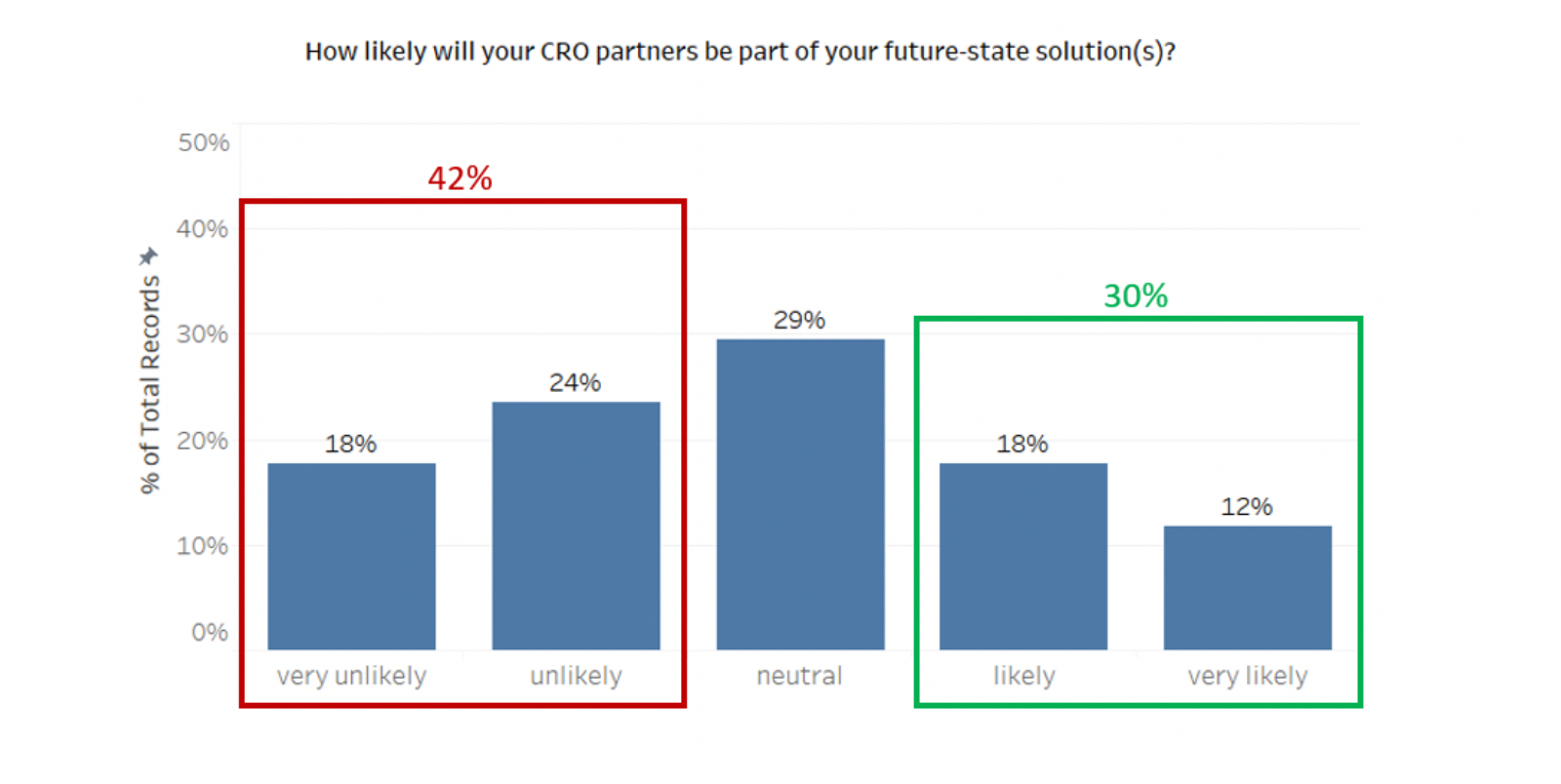

insights
On your Mark…Get Set…Go?…or Go!
“On your Mark…Get Set…Go?…or Go!” was originally published on Applied Clinical Trials. Click here to read the original article.
Understanding how your strategy will be re-shaped post-COVID.
Our industry has stepped up this year-in an uncharacteristic way. In an industry that has long been accused of being too conservative, lacking innovation, and being unwilling to change, we have proved the naysayers wrong. From fast-tracking the development of COVID-19 vaccines, to deftly welcoming telemedicine in ongoing clinical trials, to conducting virtual inspections, our response to this pandemic has been nothing short of amazing. Regulators have been furiously updating guidelines at a record pace, sites have shifted resources and processes to accommodate patients, and of course, patients continue to adapt to new remote and flexible solutions.
As Sponsors begin to shift from a reactive to a more proactive way of approaching the impact that the coronavirus has indelibly had on clinical trial conduct, they face several critical questions that they will need to have answers for.
Where do I start?
If Sponsors are not asking this question, they should be. In a recent virtual peer roundtable forum1, almost half (47%) of the attendees were not sure where to start. Not surprisingly, answers varied depending on what a Sponsor is trying to solve for. These same responders reported study delays (59%) and data collection (21%) as their main challenges during the pandemic. These are different types of problems with a variety of possible solutions.
Whether the priority is patient access/engagement or data access/acquisition, the place Sponsors should start is always the same: strategic planning. This may sound like a cop-out, but leaders should be prepared to engage with their trusted stakeholders and outline an operational strategy that fits within the company’s vision. Conducting clinical trials quickly, while ensuring patient safety and data integrity is not a strategy-it is the result of one.
As mentioned above, companies likely already have a good understanding around how the pandemic has impacted them. But they stumble when it comes to prioritizing what to address first and how. While a formal business case is likely not required for every scenario, understanding the components of one is a great place to start:
- List your priorities. From designing more patient-centric trials to obtaining more ownership of data acquisition. This list can and should be long.
- List possible solutions. Solutions are not only technologies. Solutions can be process- and people-related.
- Evaluate benefits and risks. Next comes an evaluation of the benefits and risks of possible solutions for each of the identified priorities. Note that priorities may shift after this.
- Establish goals. It is incredibly important to specifically establish both short- and long-term goals. These goals will have different assumptions and targets. One of the largest mistakes a company can make is assuming that the conduct and performance of a short-term pilot project will be the same as that of an enterprise one.
You may notice that the above bullets sound like the formation of a strategy. And you would be right.
Has my risk tolerance shifted?
Gone are the days of focusing on minor risks that don’t move the needle if they indeed become issues. We have now experienced the Black Swan of risks with COVID-19 and need to prioritize rigorous risk identification and management processes during clinical trial planning. In the same industry forum mentioned above, 75% of the attendees indicated that they have plans to mitigate the impact of the pandemic. But what exactly are these plans?
Perhaps the most important impact of the ICH E6 (R2) Guidance has had on the industry is informing companies that they have had woefully inadequate risk management processes. This “new” guidance (March 2018) expertly outlined the elements of a risk-based approach to quality management. And for the past two years, companies have been flailing in the wonderful world of key risk indicators (KRIs), quality tolerance limits (QTLs), and risk assessment and categorization tools (RACTs). Enter R3.
Without question, risk tolerance is shifting in the industry. New risks associated with decentralized clinical trials will become more visible and companies will need to identify and mitigate them accordingly. Well-positioned Sponsors are the ones that instill more provocative and strategic practices in their risk management processes. To become truly resilient, flexibility will be critical-and this begins with risk identification.
Including risks around data acquisition and data access are now elevated to “probable” likelihood with enormous impact, whereas before they were mainly categorized as unlikely to occur. Sponsors cannot be too provocative when it comes to the risk management process-this goes beyond the assumption that the COVID pandemic will recur. What about risk planning for viruses of a different type altogether-those that are technology-related? What happens if a computer virus knocks out your newly implemented remote monitoring solution? Or the site’s electronic health record (EHR)? Think and be curious. And of course, be flexible.
What process(es) will change?
Sponsors already have some information around this one-what have they observed over the last 3 months? Their reactive responses have served as harbingers for what their future processes will need to incorporate.
In addition to the risk management process changes discussed above, several additional process changes will include:
- Protocol flexibility. Perhaps one of the main discussion points during the pandemic has been around patient centricity. Designing studies with the patient in mind (and with patient input) is increasingly being baked into protocol development processes. Mapping out the patient journey/experience during a trial provides Sponsors insight into what data can be collected remotely or not at all.
- Site Selection. For trials currently starting, Sponsors are hedging their bets when it comes to selecting sites for participation by including a diverse selection of sites – both geographically and by center type. Countries that have mitigated the pandemic well (Australia, New Zealand, Korea) are increasingly attractive. In addition, private clinics may be preferred instead of larger hospital settings (that may be prioritizing acute patient care vs. clinical trials).
- Monitoring. The entire on-site monitoring visit paradigm has been changing for quite some time-even well before the pandemic occurred. The proliferation of statistical monitoring and centralized monitoring of data has brought into question the effectiveness and utility of an on-site monitoring visit. This not only has ramifications on different technologies that can be used, but also on what (or if) partners are needed (both discussed below).
What technology(ies) will I need?
It was not unintentional that we listed process before technology. A misguided decision many Sponsors make is choosing a technology solution without thoroughly considering the rationale of why it is even needed (or the resource and process implications it inherently brings). Having said that, it is no secret that those companies that have already implemented decentralized technologies (with a strategy) are better positioned because of them.
Virtual trials have actually been around for quite some time (with Pfizer’s REMOTE trial leading the way in 2011). The resistance to faster adoption of technology-enabled trials is mainly due to self-imposed internal barriers rather than those of a regulatory nature. Other than Integrated Response Technology (IRT) and electronic data capture (EDC) solutions, clinical trial technologies were primarily viewed as optional-not even nice-to-have solutions. My, have times certainly changed. Technology-enabled trials are increasingly becoming the norm in a variety of different forms: eConsent, electronic Clinical Outcome Assessment(eCOA), centralized monitoring, remote monitoring, wearables and siteless trials. As vendors that offer these solutions continue to multiply, making the “right” choice becomes increasingly burdensome and intimidating.
So, the answer to what technology you need rests on the strategic questions you previously answered-and in many companies, technology needs are at the forefront of the conversation. If different technologies were listed as possible solutions to your priorities, then there are additional considerations to address:
- The Investment. This is where a business case makes perfect sense. Questions around “make vs. buy”, return on investment, and initial costs are projected and communicated to senior leadership. Sponsors should leave the heavy technology development to the experts-at the end of the day we are scientists, not software developers.
- The Infrastructure.A Sponsor’s structure must support its strategy. In other words, smaller companies may not have the internal expertise required to even identify an appropriate solution and make a business case to support its use. Let alone the resources required to support and ultimately maintain it. In addition, a Sponsor’s portfolio of studies may not be appropriate for a virtual/decentralized solution. This information is also a component of the business case.
The infrastructure question is further supported by a recent survey2 in Clinical Leader, in which smaller companies appeared more apprehensive around the conversion to virtualized trials. A total of 329 Sponsors responded that they agreed or disagreed with the question: “Virtual clinical trials will be a major component of my organization’s clinical portfolio within two years”:

- Making it Stick. Obviously, the mere act of buying a gym membership won’t make you healthy-you need to put in the work. This is no different when it comes to technology. Purchasing a solution doesn’t immediately make you data-driven or virtual. Change management and training cannot be underestimated when it comes to system implementation. Sponsors inevitably focus on the installation of the solution vs. trying to understand the implementation process.
In order to obtain a ROI, companies need discipline to continue to use new technology rather than returning to their old ways of doing things. It’s not just getting it in and implementing, it’s continuing to drive usage until it’s part of the fabric of the organization. Raising awareness, showcasing value, and reinforcing usage are all components of a robust change management strategy. Be patient – this is long journey and hopefully your long-term goals identified in your strategy support it.
Do I have the right talent?
Talent is much more than the resources you have internally-talent also encompasses those partners you surround yourself with.
Whether companies need to implement a new development strategy, update their risk management processes, shift (or reduce) monitoring resources or implement a new technology, one critical question remains: are these changes easier to make with partners or do Sponsors have the chops to go it alone? And should they?
When asked how likely their CRO partners will be part of their future-state solution, industry professionals1 provided some interesting insight:

These results are telling in several ways. First, Sponsors are clearly considering new strategies. Whether these are based on perceived CRO inflexibility or taking more accountability for trial execution, Sponsors are positioning themselves to take more ownership of their data and processes. In addition to eschewing a CRO’s approach to treating each trial in a standard fashion, Sponsors are realizing that scaling resources is simply easier, and enables rapid decision-making without a CRO in the mix.
Next, the legacy CRO model is being challenged. Again, this is nothing new, but the pandemic showcased the limitations of the CRO. Two of the main revenue drivers for a CRO are on-site monitoring visits and project management time-both of which were rendered inadequate and useless during the pandemic. The ability to leverage data-either remotely or centrally for risk-based monitoring is changing the way Sponsors are approaching clinical trial execution. There are numerous benefits to owning your own data-from much leaner management oversight to more innovative, customized, patient-focused strategies to increased data quality.
And data-driven approaches are proving to be increasingly cheaper in the long run. While there may be a significant initial investment in a technology, the long-term return on investment is proving to dwarf the cost of engaging a CRO. There are no more airplane and hotel pass-through costs, no more redundant project management fees, and on-site monitoring costs are replaced with substantially lower centralized monitoring and remote monitoring processes. Lastly, sites just prefer working with Sponsors-so this is a great opportunity for Sponsors to build more rapport with their investigators and become their Sponsor of choice.
At the heart of these preparatory questions is the need to chart your future course. Are you contemplating Go? Or are you eager to GO! You can either wait around for best practices to emerge or you can boldly be the change you want to see in this industry. On your mark, get set…
References
- Halloran Virtual ClinOps Breakfast: Data Drive Development: Build vs. Outsourcing to CROs During COVID, Blueprint Medicines, 25 June 2020.
- Fast Track To Flexible Clinical Trials, Clinical Leader, 7 May 2020.




